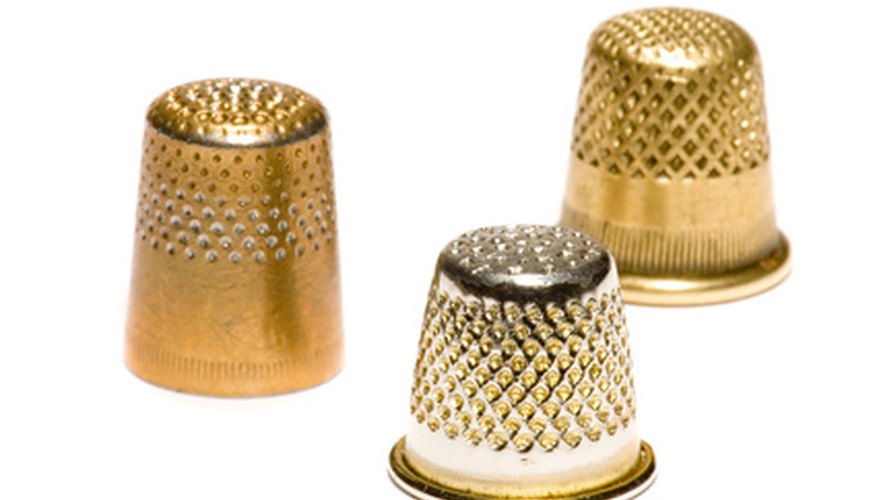Thimbles may go back into classical history, complete with dimples to seat the needle, but also take many forms. Neither open tops nor particular materials will definitively date old thimbles, but they're all among the clues to look for and learn. The most collectable thimbles are the ones used by finer ladies for finer work, though according to Gertrude Whiting in the 1928 classic "Tools and Toys of Stitchery," even plain sewing wasn't considered manual labour, and even plain thimbles were valued tools.
Match the material used to make a thimble to its period. Silver and gold were used, not only for their inherent value, but also because soft metals were easier to form into the complex shape of a thimble, and keep it even in thickness and smooth inside, than something like iron or steel, at least until thimble-making machines were developed as early as the end of the 17th century. Ivory could be carved to the right shape, but is no longer legally available. Celluloid in unusual colours delighted needleworkers and collectors in the first quarter of the 20th century. Hallmarks and other identifiers may be stamped on the outside lower border of a thimble or inside the crown.
- Thimbles may go back into classical history, complete with dimples to seat the needle, but also take many forms.
- Silver and gold were used, not only for their inherent value, but also because soft metals were easier to form into the complex shape of a thimble, and keep it even in thickness and smooth inside, than something like iron or steel, at least until thimble-making machines were developed as early as the end of the 17th century.
Analyse the decorations on a thimble for clues to its history. Elizabethan thimbles, according to Gertrude Whiting, often carried tributes to "Good Queen Bess." A French thimble may bear a fleur-de-lis design, and a thimble from the Russian empire may copy elements of the enamelwork of Peter Karl Faberge.
- Analyse the decorations on a thimble for clues to its history.
- Elizabethan thimbles, according to Gertrude Whiting, often carried tributes to "Good Queen Bess."
Connect your thimble to other collecting fields, such as advertising. Especially into the middle of the 20th century, thimbles made in inexpensive materials were given away to keep a manufacturer's name or slogan at the customer's fingertip, if not the tip of her tongue. "Do it electrically" on the red band of an aluminium thimble could point to a sewing machine manufacturer or a public utility, before or after World War II, but probably not during the war, when aluminium was needed for building aeroplanes.
Look for thimble cases, which were often more elaborate than the thimbles themselves.
